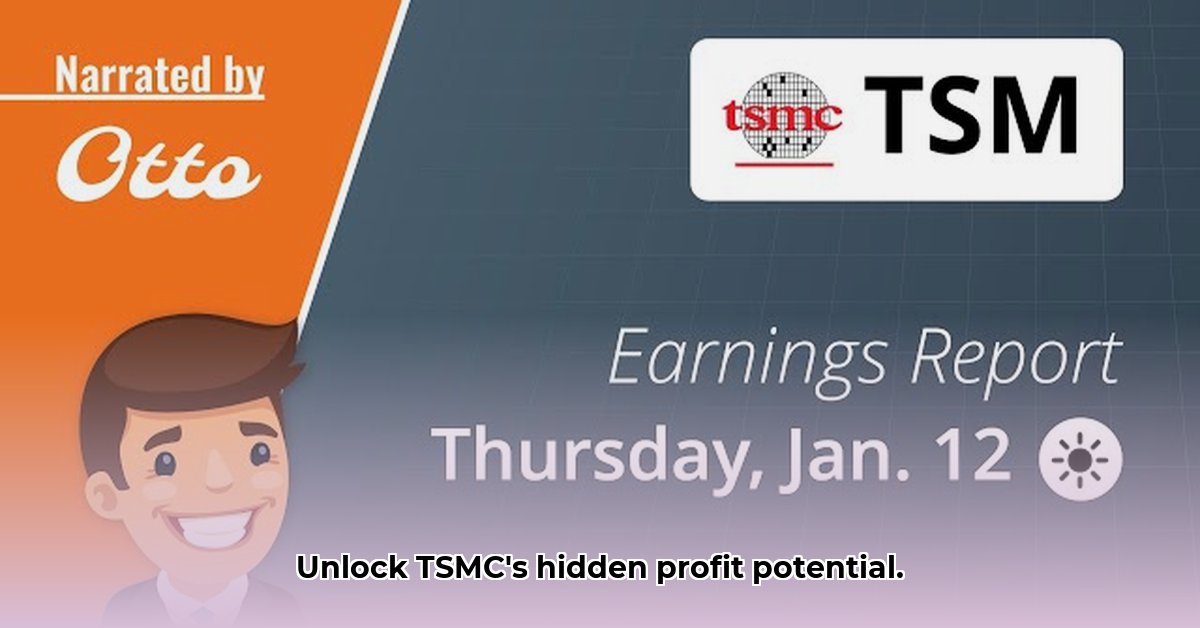
This comprehensive guide provides actionable strategies for navigating the complexities of TSMC options trading, catering to individual and institutional investors, as well as financial analysts. We'll demystify key concepts, analyze market indicators, and explore risk management strategies to help you make informed decisions.
Understanding TSMC Options: A Foundation for Success
Taiwan Semiconductor Manufacturing Company (TSMC) is a global leader in semiconductor manufacturing, making its stock and options a focal point for investors. TSMC options are contracts granting the right, but not the obligation, to buy (call option) or sell (put option) TSMC shares at a predetermined price (strike price) before a specified date (expiration date).
Key Terminology
- Call Option: The right to buy TSMC shares at the strike price by the expiration date.
- Put Option: The right to sell TSMC shares at the strike price by the expiration date.
- Strike Price: The predetermined price at which the option can be exercised.
- Expiration Date: The date when the option contract expires.
- Premium: The price paid to purchase the option contract.
- Implied Volatility (IV): The market's forecast of how much the TSMC stock price might fluctuate before the option expires. High IV suggests greater expected price movement and higher option premiums.
- Open Interest: The total number of outstanding option contracts. A significant increase can indicate growing investor conviction, either bullish or bearish.
- Volume: The number of option contracts traded during a specific period. High volume alongside high open interest strengthens the signal of market sentiment.
Are you ready to leverage the data within the TSMC options chain to predict market sentiment and potential trading opportunities? Mastering these fundamentals is crucial. Remember, options trading involves significant risk, and understanding these terms reduces potential losses.
Analyzing the TSMC Options Chain: Unveiling Market Sentiment
Analyzing the TSMC options chain involves examining the interplay of premium, volume, open interest, and implied volatility across various strike prices and expiration dates. While data limitations may exist for less liquid options, careful analysis can reveal valuable insights into market sentiment and potential trading opportunities.
For example, high volume and open interest in out-of-the-money call options (strike price above current market price) suggest a bullish sentiment, hinting at investors anticipating a significant price increase. Conversely, a similar pattern in put options reflects bearishness. However, remember market sentiment is not always a perfect predictor of future price movement.
TSMC-Specific Considerations: Navigating Unique Challenges
Several factors unique to TSMC significantly influence its options pricing. These include:
- Geopolitical Risks: Tensions between China and Taiwan directly impact investor sentiment and TSMC's stock price.
- Technological Advancements: TSMC's technological leadership and its ability to innovate remain key drivers of its success.
- Industry Cycles: The semiconductor industry is cyclical, with periods of high and low demand affecting TSMC's performance.
- Regulatory Implications: Government regulations and trade policies can have a substantial impact on TSMC's operations. Did you know that regulatory changes can significantly alter the risk profile of TSMC investments?
These factors must be factored into any option trading strategy. Ignoring these complexities can lead to significant losses. Conduct thorough research and consider the impact of each factor on options premiums.
Actionable Strategies for Different Stakeholders
Effective TSMC options strategies differ significantly based on investor profile, risk tolerance, and investment goals.
Individual Investors: Building a Foundation
Begin with simpler strategies, such as covered calls (selling call options on shares you already own to generate income) or protective puts (buying a put option to protect against potential losses). Focus on understanding the fundamentals before venturing into more complex strategies.
Institutional Investors: Leveraging Sophisticated Techniques
Institutional investors often employ complex models to assess various scenarios and hedge against multiple risk factors. They may utilize strategies like straddles (profiting from large price movements regardless of direction) or spreads (defining specific risk-reward profiles).
Financial Analysts: Incorporating Deep Analysis
Financial analysts often employ extensive research and advanced option pricing models to incorporate macroeconomic factors and geopolitical risks into their valuations. They must perform extensive analysis to assess market sentiment and forecasts for future price movements.
Considering the level of expertise required for increasingly sophisticated strategies, it is crucial to assess your own knowledge and experience. Begin cautiously and learn from your smaller investments.
Risk Management: A Critical Component of Success
Options trading is inherently risky. A robust risk management strategy is essential. This includes:
- Diversification: Spread investments across multiple assets to mitigate potential losses.
- Position Sizing: Only invest capital you can afford to lose.
- Stop-Loss Orders: Implement stop-loss orders to limit potential losses on individual trades.
- Thorough Research: Always perform extensive research before entering any trade.
Do you have a plan to manage the inherent risks involved in TSMC options trading? A robust risk management strategy is crucial for success, protecting your capital from potential losses.
Conclusion: Harnessing the Power of TSMC Options
TSMC options offer substantial potential for profit, but success hinges on understanding the underlying market dynamics, risk management techniques, and selecting strategies aligned with one's investment goals and risk tolerance. This guide serves as a starting point; continued learning and a cautious approach are vital for long-term success.
Disclaimer: This article is for educational purposes only. It is not financial advice. Consult a financial professional before making any investment decisions. Options trading carries significant risk and could lead to substantial losses.